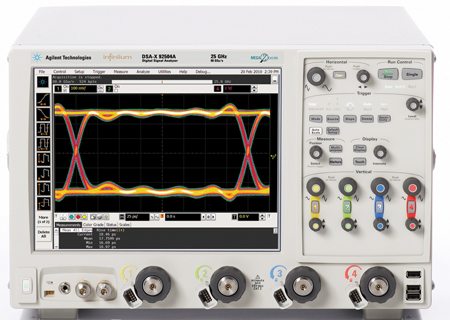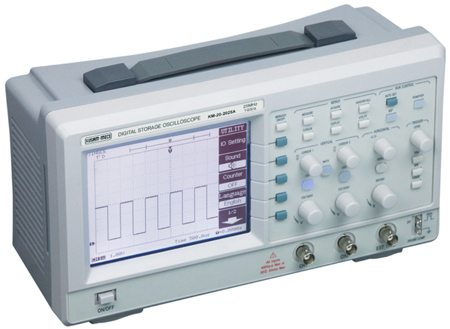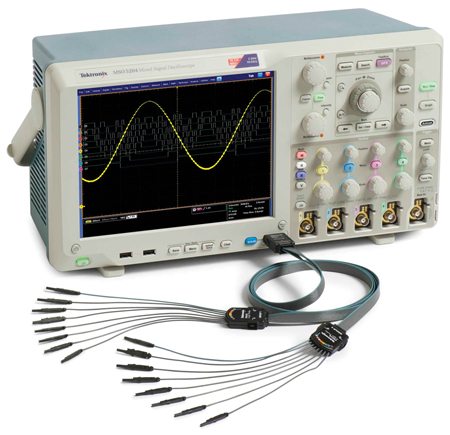
Embedded systems. Embedded technology is being used to deliver new applications and services in a variety of industries including consumer electronics, industrial electronics, automotive, avionics, medical and communications. A major trend on the design side is energy efficiency. Integration of more switch-mode power supplies in embedded systems is bringing about test issues. The use of a switch-mode power supply obviously introduces switching into the end product.
Another key trend is dynamic power management. Embedded system designers using off-the-shelf processors will spend more time looking at power usage. Hence they need to learn how to better program the devices with programmable frequency and voltage scaling.
In general, embedded systems are rapidly becoming more complex and this applies not only to high-end handsets but also to low-cost children’s toys. This, in turn, will lead to system-level test issues, which is eventually leading T&M vendors to package more tests into their instruments.
Serial data communication. The shift from parallel to high-speed serial data communications is one of the significant trends in recent times. So USB compliance testing is an important area for test and measurement. There are already some six billion USB devices worldwide. And with USB 3.0 poised to enter the design mainstream, it’s a technology with huge growth potential.

One important implication for test equipment going forward is that the expertise to validate channel compliance needs to be embedded into the instruments. Besides, advanced serial protocols are likely to make probing more challenging.
Video. In the video industry, T&M will continually evolve as new technologies arrive and picture/audio specifications and delivery systems change. It will be a whole new ballgame with digital video and its multiple formats, compression methods, screen sizes and other variations. The transition to higher-resolution digital video requires a new class of test and measurement tools for broadcasters to accommodate newer, faster and more complex technologies such as HD, 3G-SDI and IP.
Semiconductor chips. Keeping up with the design trends is pretty challenging for T&M companies. This eventually means designing ever-more capable front-end ICs for next-generation instruments.
The steadily shrinking prices of microprocessors make it financially feasible to incorporate multiple microprocessors into the design of inexpensive instruments. In this way, each different instrument function (display, analogue-to-digital conversion, etc) has its own dedicated microprocessor, allowing far higher throughput as no function has to wait its turn for processing by a central processor.
At the same time, as the worldwide demand of semiconductors for cellphones, portable wireless devices and consumer electronics grows, T&M designers have to offer instruments capable of testing the increasingly sophisticated components that go into these devices.
T&M design trends
Increasingly complex testing requirements are driving T&M manufacturers to improve and incorporate features like multichannel testing, higher bandwidth and smoother PC interface with user-friendly software. Transition from analogue to digital, and from standalone instrument to a total test solution, and development of application-specific test instruments are the primary transitions.
Driven by the user need, there is transition towards hybrid test equipment that occupy less space but perform multiple functions. Test equipment are now no more mere benchtop. These are increasingly becoming integrated with PCs for real-time measurements and monitoring by adopting PXI (peripheral extension interconnect), PCI (peripheral component interconnect) PC-based platform and VXI technologies.
Software-defined instrumentation based on National Instruments’ LabVIEW graphical programming platform, parallel processing technologies, and new methods for wireless and semiconductor tests help engineers develop faster and more flexible automated test systems.

Also, T&M instruments today incorporate highly graphical displays/readouts and are easier to interface with external ancillary equipment such as part handlers, probers and switches. Use of new communication interfaces and smart switching is changing the way they are used.
New communication interfaces. Until recently, instruments employed GPIB and serial (RS-232) interfaces for PC communications. Today, however, most system instruments include Ethernet, or better yet LXI and USB interfaces, in addition to the legacy buses, which may be provided as optional or standard equipment.
“Over time, higher-performing and lower-cost interfaces will win out over legacy interfaces such as GPIB on rack-and-stack instruments. But this displacement is likely to take years to transpire,” anticipates Klaus Leutbecher, vice president-worldwide sales, Keithley Instruments.
Smart switching. Manufacturers of switching hardware for automated testing have been talking up this concept for production test applications for close to two decades. Now some new designs employ an embedded test script processor (TSP) that offers enhanced capabilities for controlling test sequencing/flow, decision-making and instrument autonomy.
“Users program and communicate with TSP-enabled instruments in two ways—either by executing individual TSP commands (similar to sending individual SCPI commands) or by writing test scripts. Designed to reside on the instrument or switch mainframe itself, such scripts are a collection (list) of instrument control commands and/or program statements that can be executed on command. The use of these scripts can eliminate the transmission time from the PC to the switch system because all commands and statements in the script are executed by the mainframe. For switch mainframes equipped with an LXI interface, all TSP configuration and script loading and data transfer can be performed via this interface,” explains Leutbecher.






